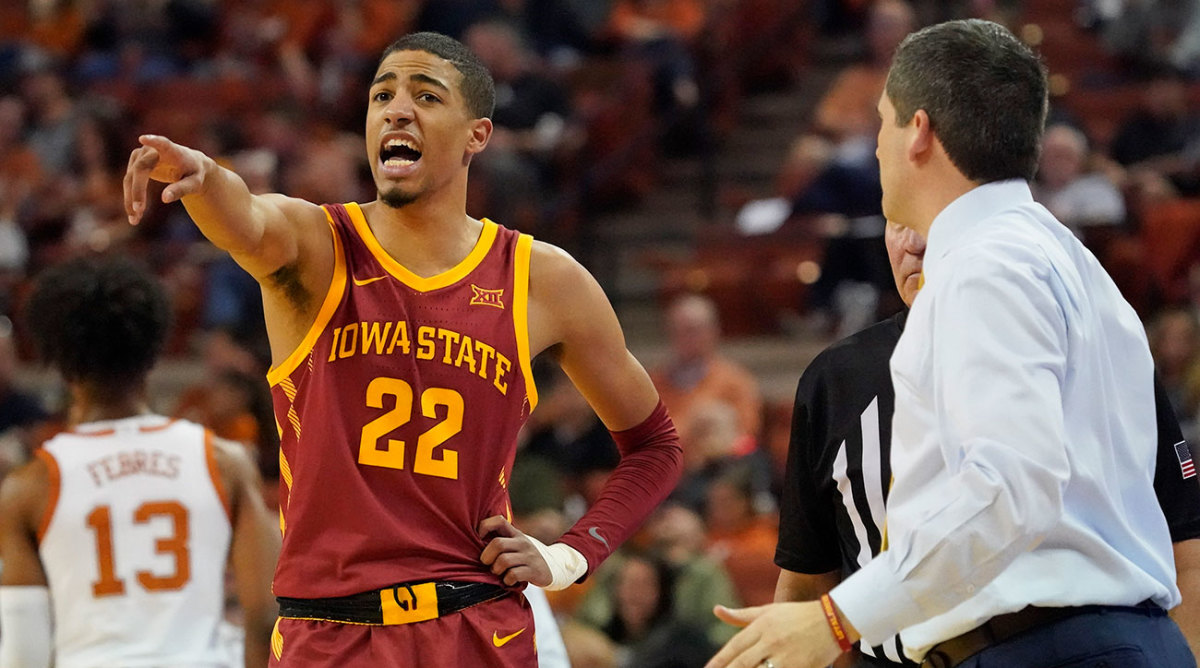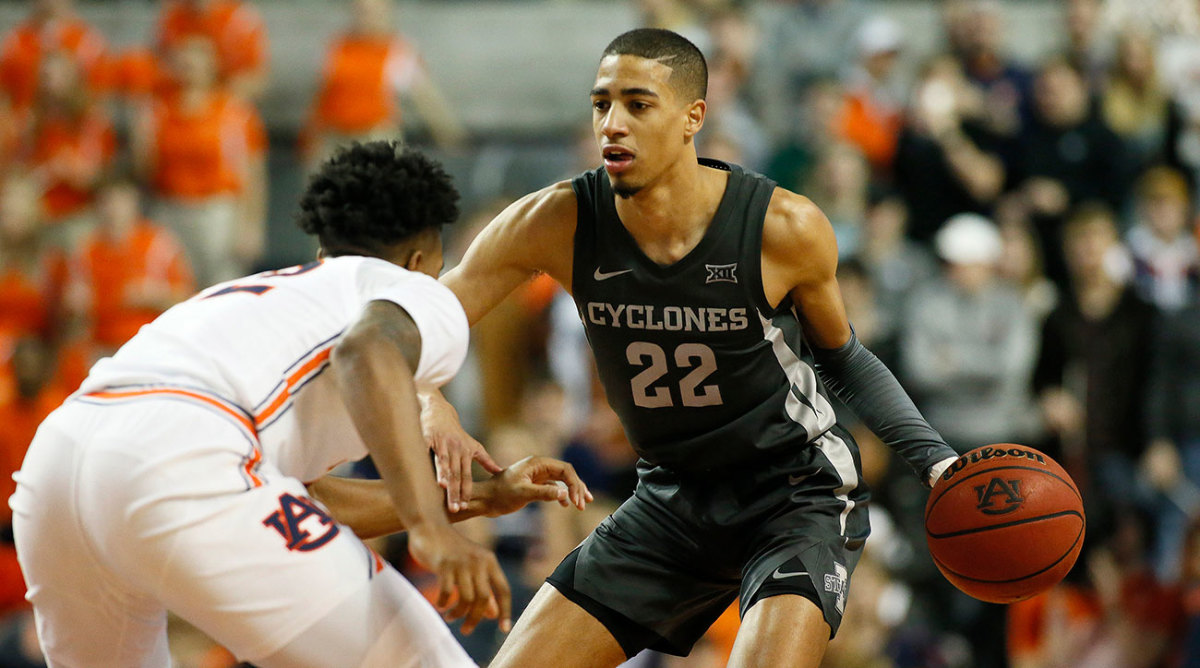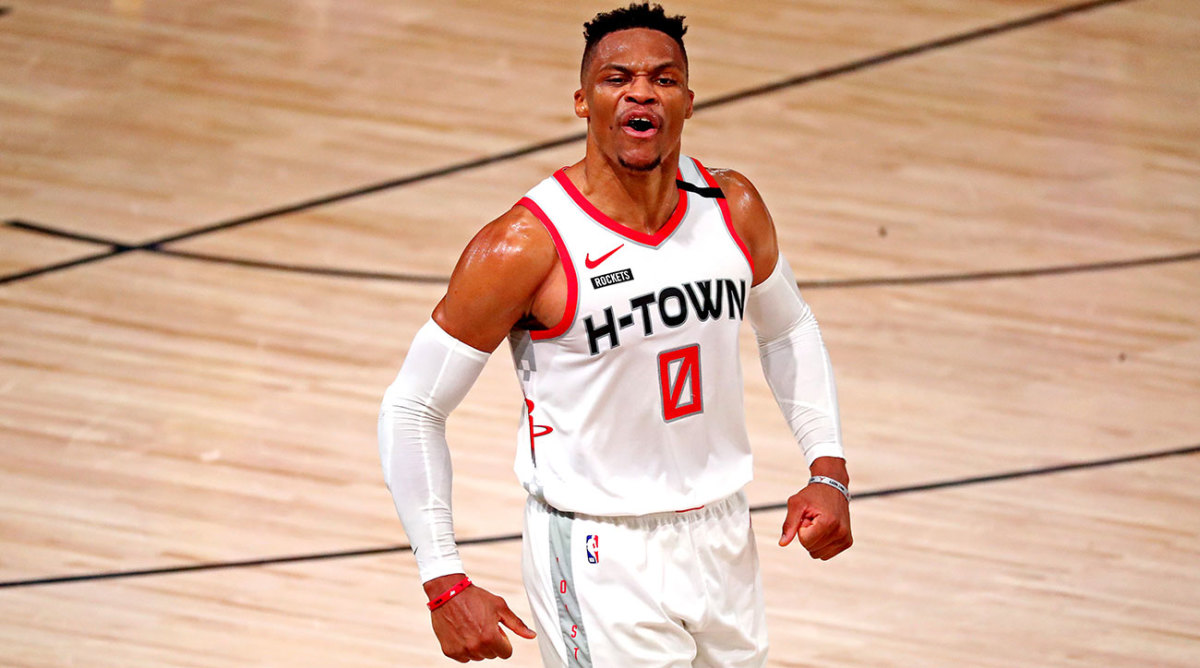Which Stars Could Be on the Move Soon?
Welcome to The Crossover’s NBA Draft newsletter, bringing you exclusive content, intel and analysis as the 2020 draft draws near. Sign up here to receive more stories like this in your inbox.
Few college assistants have been in closer proximity to top talent in recent years than James Kane. First he recruited Ja Morant to Murray State, then spent a year at Dayton when Obi Toppin was redshirting. Since then, Kane has spent the last two seasons at Iowa State during Tyrese Haliburton’s ascendance. I recently caught up with Kane to pick his brain, (and to hope some of his good fortune might rub off through osmosis).
Editor's note: This interview has been lightly edited for clarity.
Jeremy Woo: You’ve been around a lot of great players the past few years. Tyrese and Obi were late bloomers and are now projected lottery picks. Do you see anything those guys have in common?
James Kane: All three coaches I’ve worked for (Steve Prohm, Anthony Grant, Matt McMahon) have run stuff predicated on ball movement and four out, one-in. Recruiting in general is a crapshoot in my opinion, but you gotta try and see the fit. Our staffs have always tried to see who would fit in the system—we like guys who are extremely versatile in ball screens and can play different positions. But I think off the court, the connecting attribute with both Tyrese and Obi is just how competitive they are day in and day out. They bring energy and don’t take days off. I’m a big believer in both of them with that human aspect.
JW: In Tyrese’s case, outwardly there was zero expectation going into his freshman year. Then there was an injury, he ends up starting, stays there the entire season and the NBA starts to take notice. When did you start to figure out he had a chance to be better than you thought?
JK: I wasn’t part of his recruitment, but just having him in practice, in drills, different competitive segments, he stood out to where it was clear that ... he was going to help us win. He’s vocal, energetic, the type of player who whenever practice starts is the one bringing the energy, bringing the juice, lifting everybody up. In that first month when we got him, he really stood out to the staff. Prohm put him in the lineup and he just took off from there. As the season went on, he really earned those minutes. It wasn’t always in the stat sheet, but he helped us win in a real way.

JW: Noticing the leap he took between his freshman and sophomore seasons—showing he could really run your team (per KenPom data, Haliburton went from using just 10.1% of possessions to 21.4%)—that’s not really a normal jump players make. What was Tyrese’s mindset like and how would you characterize that growth?
JK: I think we saw it from the moment he got back on campus. A big reason for that, in my opinion, was Marial Shayok (now on a two-way contract with the 76ers), who’s one of the hardest workers I’ve coached. He really took him under his wing and showed him what work ethic looks like. It got to the point where Tyrese was in the gym with our graduate assistants twice a day in the morning before practice even started. He came back with a chip on his shoulder. After we won the Big 12 tournament (in 2019), he carried that energy over onto Team USA—I went over to Greece and watched a few games with his mom—and he just flourished there as a leader on and off the court. To me his best attribute is he makes everyone else better, not just teammates, but also coaches.
JW: Knowing Tyrese played a big chunk of last season banged up (He injured his left wrist in December before fracturing it in early February). How much do you think that affected him?
JK: He’s a tough kid, and he played through the pain at various points in the season and didn’t make excuses. When we shut him down after he broke it, you could tell he still wanted to play. He stayed around campus when a lot of guys would have just left and trained on their own, but he was here. His parents came to home and away games to support the program. Tyrese was still here in the gym shooting with one hand and a brace on his other wrist.
JW: I know your experience with Obi was less hands-on, and he redshirted the year you were there. What do you remember most about coaching him?
JK: The staff really did a great job developing him. He was a great fit for what Coach Grant was doing at Dayton, but give all the credit to Obi because every time I saw him during that year, he was always working. His motor, the way he ran the floor, the way he was able to just beat people to the ball. And I think in terms of the NBA, in a long 82-game season, you’re gonna be able to count on him showing up and outworking people. He had a late growth spurt and had guard skills but was still developing physically. From the first day he walked in the door as a freshman to where he is now, you can really see that growth in his body, building a real physique. And seeing him start to block and alter shots, defend different positions, it’s been amazing to see.
***
- Jeremy Woo’s latest Mock Draft
- NBA players’ quest to mobilize voters
- Tom Crean on Anthony Edwards
- Why LaMelo is the draft’s swing factor
- How to raise your draft stock in a pandemic
- What should the Warriors do with No. 2?
***

Prospect close-up: Tyrese Haliburton
Although nearly everything about Haliburton’s game is unorthodox, his advanced on-court intellect, winning skill-set and rapid trajectory set him apart in a lottery where the talent gap between prospects is narrow. It’s easy to harp on the holes in his game: unusual shooting mechanics, unremarkable explosiveness and a still-developing handle. Yet those weaknesses could be effectively masked by his savant-like ability to to grease the wheels of an offense. Haliburton doesn’t need to be a full-time point guard to wind up as one of the best players in this draft. At worst, he profiles as a highly usable bench piece on a winning team. His real value lies in what his presence does for everyone else on the floor, as a ball-moving facilitator who hits open threes and can augment any lineup.
Read more in SI’s latest Big Board
***

Which stars could be on the move?
With the NBA and NBPA moving closer to an operating agreement for next season, expect a lot more from the offseason rumor mill in the coming days. The Athletic reported Wednesday that New Orleans has begun to openly discuss Jrue Holiday trades with other teams. Here are a few other situations to keep an eye on.
— With the Rockets undergoing a leadership change after Daryl Morey’s departure and the arrival of coach Stephen Silas, any pathway to significantly altering the roster—should they opt to pivot from small ball—may involve Russell Westbrook. His massive contract and declining play are obstacles, but Westbrook still has star power. If Houston is willing to take back other teams’ bad contracts, there could be a pathway to making it work. The Rockets don’t have a pick in this year’s draft and placed little value on picks under Morey, preferring to work the undrafted rookie market. We’ll see if that changes.
— Indiana doesn’t have a pick in this year’s draft either, but with Victor Oladipo entering the last year of his contract, there’s been speculation about the Pacers moving on and getting in front of it. There’s some thought that Indiana would prefer to shed salary this offseason one way or another. Myles Turner has often come up as another player other teams may try to target.
— Without naming a specific player here, I would just keep an eye on Atlanta. It’s well known that the Hawks have been itching to join the playoff race and jump-start a competitive window with Trae Young. The Hawks have made draft-day trades each of the past two years, and hold the No. 6 pick this time around, which I’d expect to be part of trade discussions. They also have some intriguing young talent on the roster, own all their future first-round picks, and are coming into a massive amount of cap space, with few high-end free agents available to chase on the open market. Atlanta has impetus to move, and the flexibility to do a lot of different things.
